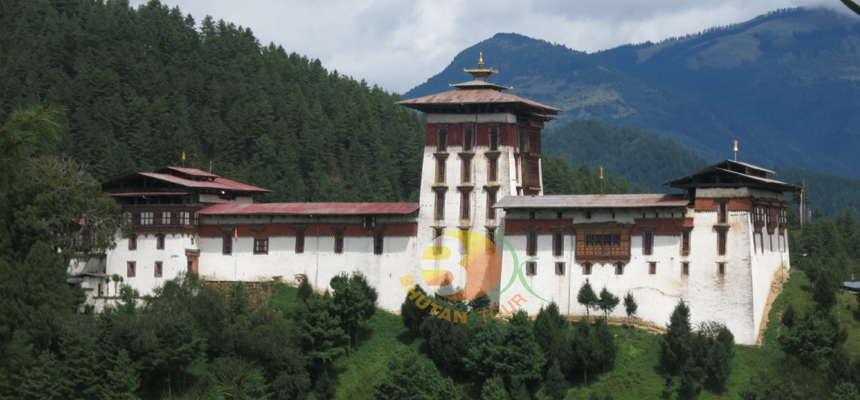To the east of Trongsa lies the Bumthang valley at an altitude of 2,600m, has an individuality that charms its visitors and separates it from other regions. Comprised of four smaller valleys, the deeply spiritual region of Bumthang is shrouded in religious legend. Here tales of Guru Padmasambhava and his re-incarnation known as Tertons still linger in most nooks and corners. The town of Jakar is the largest between Thimpu in the west and Trashigang in the east. Jakar is famous for its honey production, cheese, apple juice and apricots.
Visitors to Bumthang should plan to spend a few days taking advantage of the valley’s relatively gentle slopes to walk nearby medieval temples and glimpse Bhutan’s mostly rural population. It is also known for its woollen material (yathra) which can be seen hung outside of houses for sale. Further east there is the Ura valley with the village of Ura in its centre. A small but old dzong and cobblestone paths give the village a medieval feel. Many excursions can be done at this valley like Tharpaling monastery, Kunzangdra, Tang Mebartso and many more…
Sightseeing around Bhumthang or Jakar
Jakar Dzong
Founded by the great grandfather of Shabdrung. The dzong was initially built as a monastery in 1549 but was upgraded after the Shabdrung had firmly established his power in 1646. The Dzong is now used as the administration center for Bumthang valley.
Wangdichholing Palace
Wangdichholing Palace, built in 1857, looks unlike many other palaces in Bhutan, as it was the first palace not constructed as a fortress. The palace itself is as unassuming as anything else in Bhutan, lacking the compound-like atmosphere commonly associates with palaces, especially in the third world. The palace was the principal residence of the first king and was used by the second and third, but it is now vacant. The King’s aunt presently owns the palace. Surprisingly enough, the door was unlocked and we walked around the courtyard. The palace overlooks Bumthang Chhu (river).
Lamey Goemba Kurje
Located above Jambey Lhakhang consists of three temples. The one on the right was built in 1652 on the rock face where Guru mediated in the 8th century. Second temple is built on the site of a cave where Guru Padmasambhava left his body imprint on the rock . The cave is not visible as it is concealed by a large statue of the Guru Rinpoche. The third temple was recently built by the present Royal Queen mother and these three temples are surrounded by 108 stupa wall symbolic of each joint of the Human body.
Lhakhang Tamshing Lhakhang
Located opposite Kurje Lhakhang on the other side of the river was founded in the beginning of the 16th century by Terton Pema Lingpa, the reincarnation of Guru Padmasambhava. The monastery has very interesting religious painting like 1,000 Buddhas and 21 Taras (female form of Buddhisatawa). The temple was restored at the end of the 19th century.
Konchogsum Lhakhang,
Konchogsum Lhakhang likely dates to the 6th or 7th centuries and was restored in the 1500s by Pema Lingpa and also in 1995. Aside from its age, the Lhakhang is significant for its holding a 2-ft-tall broken bell. The bell composed of 10% gold, 20% silver, 50% bronze, and 20% tin, could be heard all the way in Tibet when rung. In the 1600s, the Tibetan army tried to steal the bell, but it was so heavy that it was dropped and broken. The bell used to be in the National Museum in Paro, but it is now restored to the Lhakhang. An offering can be placed inside the bell’s broken shell.
Jambey Lhakhang :
Built in the 7th century by a Tibetan King Songtsen Gempo believed to be the reincarnation of the Buddha of compassion. This temple is one of the 108 temples built by him to subdue a large demon which was stopping the spread of Buddhism.
Peling Sermon Chorten
Thowada Gomba


Comments